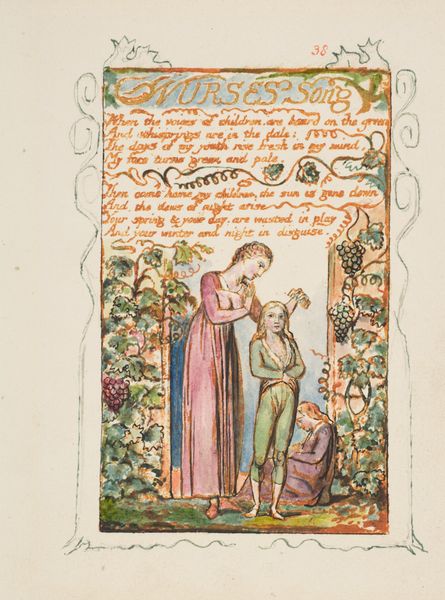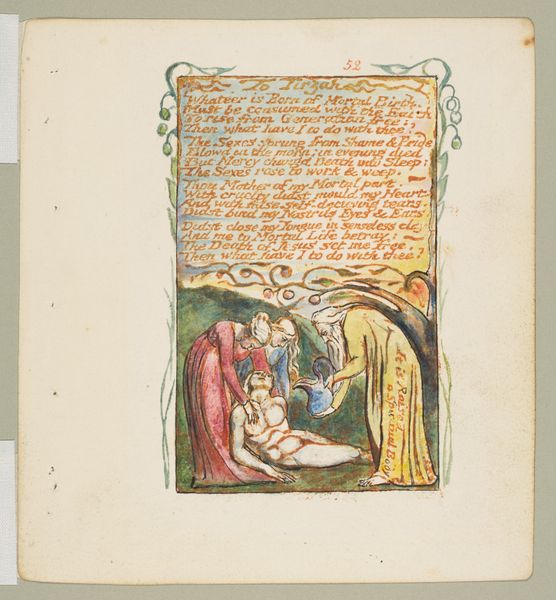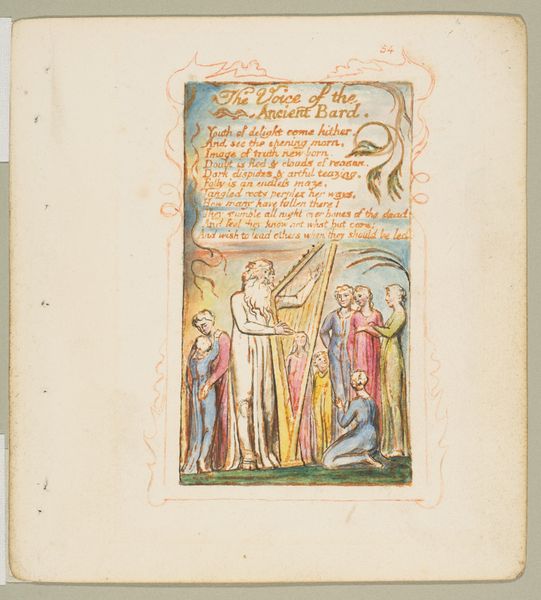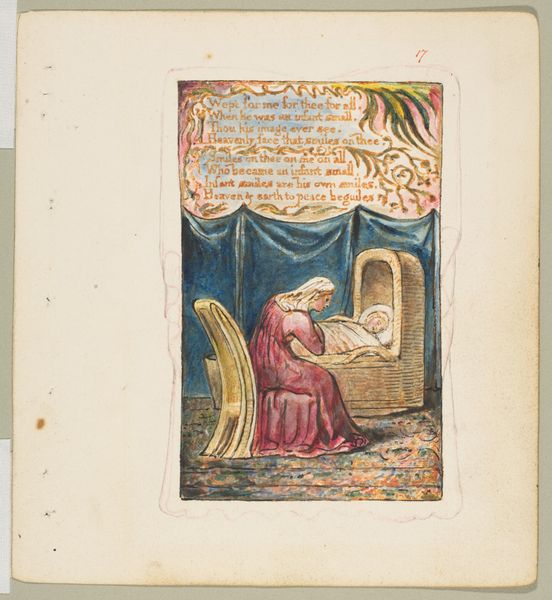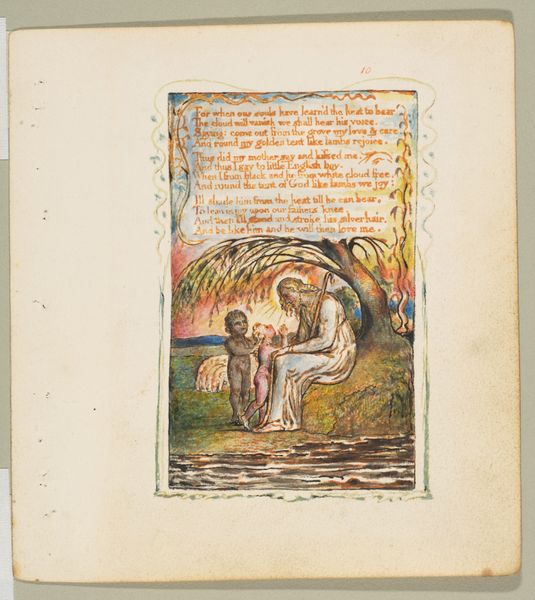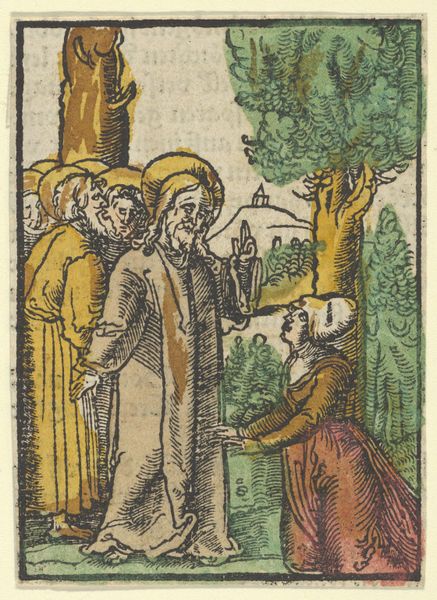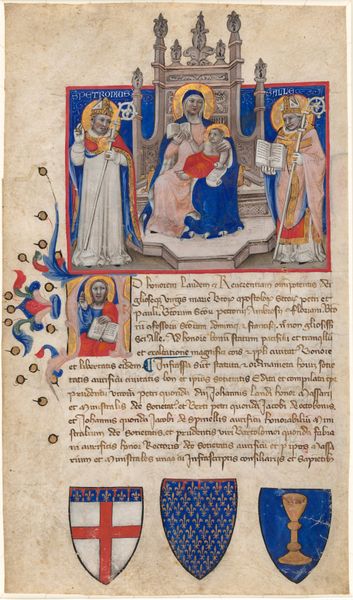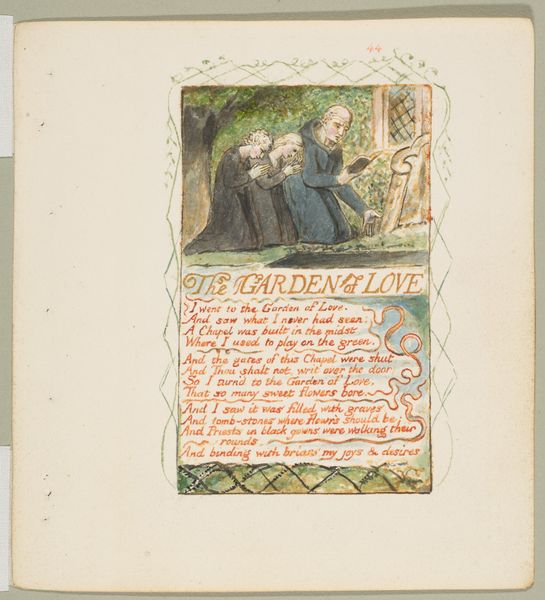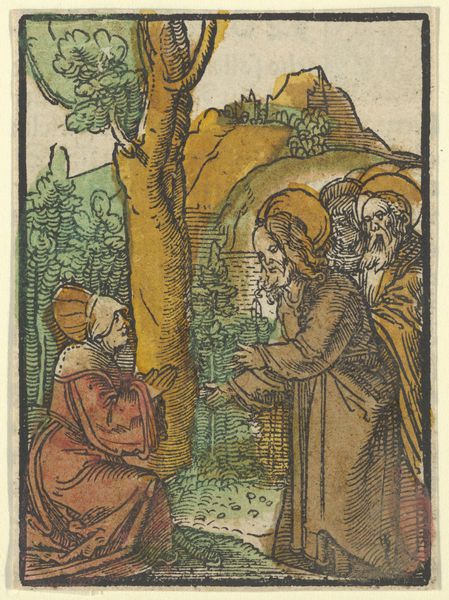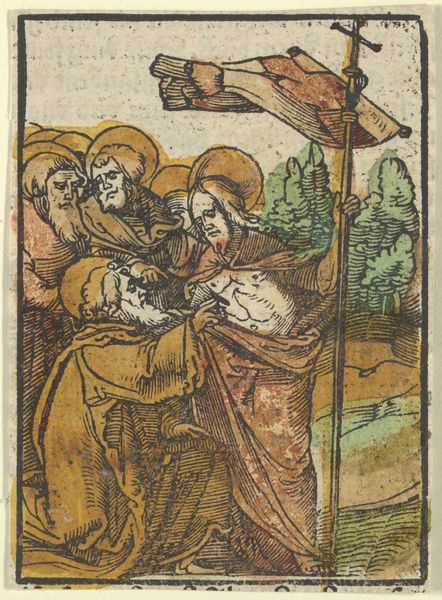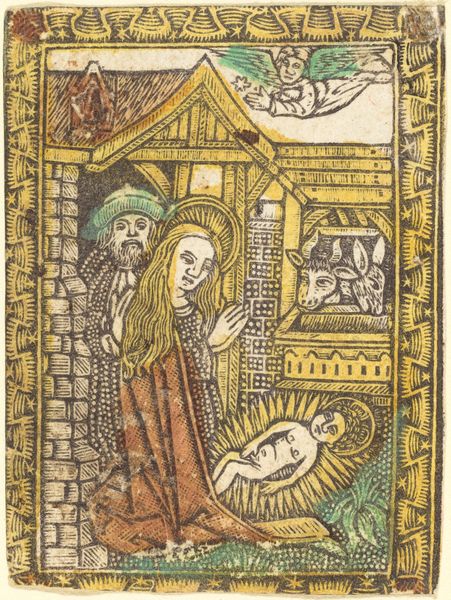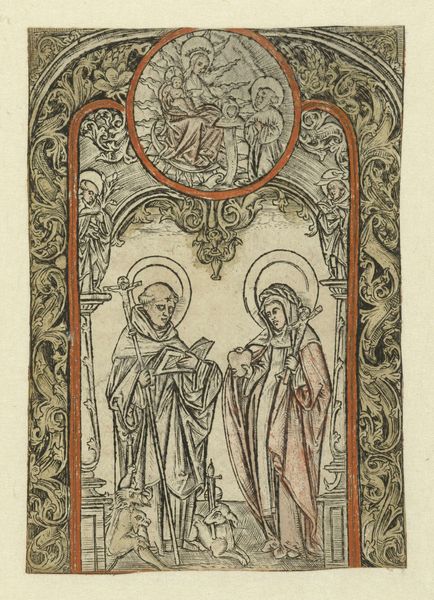
Dimensions: sheet: 6 3/16 x 5 9/16 in. (15.7 x 14.1 cm)
Copyright: Public Domain
Curator: Here we have William Blake’s "The Fly" from his *Songs of Experience*, dating from between 1794 and 1825. It's currently housed at the Metropolitan Museum of Art. What strikes you first about this watercolor and coloured pencil work, knowing it's also a print? Editor: It has a very dreamlike, ephemeral quality. The colours are soft, almost faded, lending it a fragile, melancholic air. And the handwritten text integrated into the composition adds a deeply personal dimension, like a page torn from a journal or a spell. It feels intensely intimate. Curator: Intimacy is key. Blake was deeply concerned with social injustices, using his art as a tool for political commentary, often intertwining themes of innocence and experience. “The Fly,” like many of Blake's illuminated prints, combines text and image to explore these themes through the lens of marginalized beings. The image depicts two young figures seemingly held and accompanied by an older figure among the vegetation, while also including his poem within the image. Editor: Examining the production, Blake’s technique is really quite innovative. The etching process would've allowed for multiple copies, making his socio-political messages more accessible. The watercolour adds another layer, bringing color and depth that challenges any strict separation of fine art and craft, don't you think? Each print became its own unique piece, a testament to labour and his dedication to message delivery. The labour aspect is hard to ignore. Curator: Exactly, and considering the cultural and political milieu, we can read the child as representing vulnerability but also potential, perhaps challenging the exploitative labor practices of the time. This intersects with themes of freedom, societal expectations, and even the rights of children as members of a burgeoning democratic society. Editor: I'm particularly interested in the fly as a motif. It appears to me to serve as this sort of raw material or the thing that informs all of it and is being investigated, even literally, on the surface of the print. Is Blake, perhaps, proposing a connection between the act of creation and acts that are violent, disturbing or generally viewed as impure? Curator: That's a poignant reading. Ultimately, this piece showcases Blake's radical approach. By interweaving image and text and layering various production methods he creates space for viewers to explore political and social commentary. Editor: It prompts questions about the very materiality of artistic creation. A beautiful example of form enhancing and solidifying Blake’s message of his time, while creating a timeless sentiment about both humanity and how we approach creation itself.
Comments
No comments
Be the first to comment and join the conversation on the ultimate creative platform.
